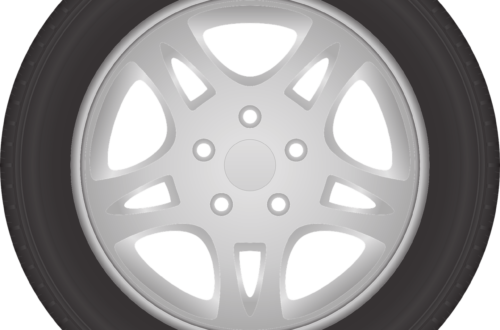Are you looking to maximize the performance and longevity of your vehicle’s tires? Look no further! This article will provide you with essential tips and techniques for achieving optimal performance through proper tire inflation. We all know that tires play a significant role in the overall performance and safety of our vehicles, but did you know that maintaining the right tire pressure can dramatically impact fuel efficiency, tire wear, and handling? Join us as we explore the importance of proper tire inflation and discover simple yet effective techniques to ensure your tires are always at their best. Whether you’re a seasoned driver or a beginner, this article is a must-read for anyone who wants to get the most out of their vehicle’s tires.

This image is property of images.pexels.com.
Importance of Proper Tire Inflation
Proper tire inflation is essential for several reasons. Not only does it enhance your safety on the road, but it also improves fuel efficiency and ensures a longer lifespan for your tires. By maintaining the correct tire pressure, you can enjoy a smoother ride and avoid potential dangers that may arise from under-inflated or over-inflated tires.
Enhances Safety
One of the most crucial reasons to maintain proper tire inflation is to enhance safety while driving. When your tires are properly inflated, they have the best grip on the road, providing optimal traction and control. This means that you can safely maneuver your vehicle in various driving conditions, including wet or slippery roads. On the other hand, under-inflated tires can lead to reduced traction, making it more challenging to stop or steer your vehicle efficiently. By ensuring that your tires are inflated to the correct pressure, you can significantly reduce the risk of accidents and keep yourself and your passengers safe.
Improves Fuel Efficiency
Proper tire inflation is also essential for improving fuel efficiency. Under-inflated tires create more rolling resistance, which requires your vehicle’s engine to work harder to propel it forward. As a result, your fuel consumption increases, lowering your overall gas mileage. By regularly checking and maintaining the correct tire pressure, you can reduce rolling resistance and improve fuel efficiency. In turn, this helps you save money on fuel costs and reduces your carbon footprint by minimizing greenhouse gas emissions.
Ensures Longer Tire Lifespan
Maintaining the proper tire inflation also ensures a longer lifespan for your tires. When your tires are under-inflated, they experience uneven wear, primarily on the outer edges. This uneven wear reduces the tread depth, which compromises traction and increases the risk of blowouts. Conversely, over-inflated tires wear down the center of the tread, leaving the outer edges underutilized. By keeping your tires inflated to the correct pressure, you ensure even wear across the entire tread, extending their lifespan. This means that you won’t have to replace your tires as frequently, saving you money in the long run.
Determining the Correct Tire Pressure
To determine the correct tire pressure for your vehicle, there are several methods you can use. It’s crucial to refer to your vehicle’s manual, check the Tire Pressure Monitoring System (TPMS), or use a tire pressure gauge to ensure accuracy.
Consulting the Vehicle Manual
The first and most reliable method to determine the correct tire pressure is by consulting your vehicle’s manual. The manual will provide you with the manufacturer’s recommended tire pressure in pounds per square inch (PSI). It’s important to note that the recommended tire pressure may differ depending on the front and rear tires or if there is a difference in load distribution. Taking a few moments to consult the manual can give you the precise tire pressure information specific to your vehicle.
Checking the Tire Pressure Monitoring System (TPMS)
Many modern vehicles are equipped with a Tire Pressure Monitoring System (TPMS). The TPMS constantly monitors the tire pressure and alerts you if it falls below a certain threshold. This system is particularly helpful as it provides real-time information about the tire pressure. However, it’s important to note that the TPMS may not always provide the exact PSI, but rather an indication of low pressure. In such cases, it’s still recommended to use a tire pressure gauge for accurate measurements.
Using a Tire Pressure Gauge
Using a tire pressure gauge is a simple yet effective way to determine the correct tire pressure. These small handheld devices are widely available and relatively inexpensive. To use a tire pressure gauge, remove the valve cap from the tire, firmly press the gauge onto the valve stem, and read the pressure displayed on the gauge. It’s important to remember to check the tire pressure when the tires are cold, as hot tires may give inaccurate readings. By using a tire pressure gauge, you can ensure that your tires are inflated to the correct pressure for optimal performance.
Factors Affecting Tire Inflation
Several factors can affect tire inflation, and it’s important to consider them to maintain proper tire pressure consistently. Understanding how temperature, altitude, and driving conditions impact tire inflation can help you make necessary adjustments to ensure optimal performance and safety.
Temperature
Temperature plays a significant role in tire inflation. As the temperature changes, the air within the tire expands or contracts, affecting the overall pressure. Warmer temperatures cause the air inside the tire to expand, leading to increased tire pressure. Conversely, colder temperatures cause the air to contract, resulting in lower tire pressure. It’s important to monitor your tire pressure regularly, especially during extreme temperature variations, to ensure that it remains within the recommended range.
Altitude
Altitude also affects tire inflation. As you ascend to higher altitudes, the air pressure decreases. This decrease in atmospheric pressure can cause the tire pressure to decrease as well. Conversely, descending to lower altitudes can cause an increase in tire pressure. If you frequently travel to areas with significant variations in altitude, it’s essential to monitor your tire pressure and make any necessary adjustments to maintain the recommended PSI.
Driving Conditions
The driving conditions you encounter can also impact tire inflation. Driving on rough terrain or over potholes can cause the tires to lose air more quickly. Additionally, excessive braking or acceleration can generate heat, leading to an increase in tire pressure. It’s important to be mindful of the driving conditions and regularly check your tire pressure to ensure it remains within the recommended range.
Effects of Under-inflation
Under-inflated tires can have several negative effects on your vehicle’s performance, safety, and longevity. It’s crucial to be aware of these effects to take appropriate measures and maintain proper tire pressure.
Increased Tire Wear
When your tires are under-inflated, they are more susceptible to increased wear and tear. Under-inflation leads to uneven distribution of the vehicle’s weight, causing the outer edges of the tires to bear the majority of the load. This uneven wear not only reduces the lifespan of the tires but also compromises their ability to grip the road. Increased tire wear can lead to decreased traction, reduced handling capabilities, and an increased risk of accidents.
Reduced Traction
Under-inflated tires also result in reduced traction, compromising your vehicle’s ability to grip the road. This can lead to longer stopping distances, especially in wet or slippery conditions. Reduced traction increases the likelihood of accidents, as your vehicle may skid or slide out of control. By maintaining proper tire inflation, you ensure that your tires have optimal contact with the road, providing better traction and improving overall safety.
Potential Blowouts
Perhaps the most dangerous effect of under-inflation is the potential for tire blowouts. When a tire is significantly under-inflated, it becomes more susceptible to damage and overheating. The increased flexing of the tire’s sidewalls generates excessive heat, which weakens the tire’s structure. This can ultimately lead to a blowout, where the tire suddenly bursts while driving. Tire blowouts can cause a loss of control, resulting in accidents, injuries, or even fatalities. Regularly checking and maintaining proper tire inflation helps prevent the occurrence of blowouts and ensures the safety of all vehicle occupants.

This image is property of images.pexels.com.
Effects of Over-inflation
While under-inflation poses its own set of problems, over-inflation can also have adverse effects on your tires and overall driving experience. It’s important to be aware of these effects and take the necessary steps to maintain the correct tire pressure.
Reduced Traction
Over-inflated tires can significantly reduce traction, posing a safety hazard. When the tire is over-inflated, the contact patch between the tire and the road decreases. This reduces the amount of tire surface area in contact with the road, leading to a decrease in grip. As a result, your vehicle’s braking distance may increase, and it may be more challenging to maintain control, especially on wet or slippery surfaces. By ensuring your tires are properly inflated, you can maintain optimal traction and improve overall safety.
Uneven Tire Wear
Over-inflation can cause uneven tire wear, similar to under-inflation. However, the wear pattern differs. Over-inflated tires tend to wear more in the center of the tread, while the outer edges receive less wear. This uneven wear compromises the lifespan of the tires and can lead to reduced handling capabilities. To maximize the longevity and performance of your tires, it’s important to maintain the correct tire pressure consistently.
Harsher Ride
Over-inflated tires can result in a harsher and less comfortable ride. When the tire is overfilled with air, it becomes stiffer, reducing its ability to absorb shock and vibrations from the road. This stiffness can make your ride feel less smooth and more rigid, affecting your overall driving experience. By maintaining the correct tire pressure, you can ensure a more comfortable and enjoyable ride.
Proper Tire Inflation Techniques
To achieve and maintain proper tire inflation, there are several techniques you should follow. By implementing these techniques, you can keep your tires in optimal condition, ensure safety, and maximize their lifespan.
Regularly Check Tire Pressure
Regularly checking your tire pressure is essential for maintaining proper inflation. Make it a habit to check your tire pressure at least once a month, or before embarking on long trips. It’s important to check the tire pressure when the tires are cold, as hot tires can give inaccurately high readings. By checking the tire pressure regularly, you can detect any deviations from the recommended PSI and take the necessary steps to restore proper inflation.
Inflate Based on Recommended PSI
Always inflate your tires based on the recommended PSI stated in your vehicle’s manual or tire placard. The recommended tire pressure is specific to your vehicle’s make, model, and tire size. Under no circumstances should you over-inflate or under-inflate your tires based on guesswork or assumptions. Properly inflating your tires to the recommended PSI ensures optimal performance, safety, and longevity.
Consider Load and Usage
When inflating your tires, it’s important to consider the load and usage of your vehicle. If you frequently carry heavy loads or tow trailers, you may need to increase the tire pressure slightly to accommodate the additional weight. Conversely, if you often drive with minimal or no load, you may need to decrease the tire pressure slightly. It’s crucial to find the right balance and adjust the tire pressure accordingly to ensure optimal performance and safety.

This image is property of images.pexels.com.
Using a Tire Pressure Gauge
A tire pressure gauge is a valuable tool for accurate and precise tire pressure measurements. To effectively use a tire pressure gauge, follow these steps:
Selecting the Right Gauge
There are various types of tire pressure gauges available, including digital and analog gauges. Choose a gauge that suits your preferences and budget. It’s important to select a gauge with a range that covers your vehicle’s recommended PSI. Additionally, ensure that the gauge is accurate and in good working condition.
Checking Tire Pressure
To check the tire pressure, remove the valve cap from the tire’s valve stem. Firmly press the tire pressure gauge onto the valve stem until you hear a slight hissing sound, indicating that the air is being released into the gauge. Hold the gauge in place for a moment to allow it to read the pressure accurately. Take note of the reading displayed on the gauge.
Inflating or Deflating as Needed
After determining the tire pressure using the gauge, compare it to the recommended PSI for your vehicle. If the tire pressure is too low, inflate the tire by adding air using an air compressor. Use caution not to overinflate the tire while doing so. If the tire pressure is too high, release some air by gently pressing the center pin inside the valve stem using the tip of the gauge or a small object, such as a pen. Repeat the process until the tire pressure matches the recommended PSI.
Benefits of Using Nitrogen Inflation
Another option to consider for tire inflation is the use of nitrogen instead of regular compressed air. Nitrogen inflation involves filling the tires with highly purified nitrogen gas rather than regular air. Here are some benefits of using nitrogen inflation:
Reduced Tire Pressure Fluctuation
Nitrogen is less likely to expand or contract due to temperature changes, resulting in reduced tire pressure fluctuation. This means that nitrogen-inflated tires maintain their pressure for a more extended period, reducing the need for frequent adjustments. The stable tire pressure improves overall safety and performance.
Improved Fuel Efficiency
Nitrogen inflation can also contribute to improved fuel efficiency. With reduced pressure fluctuations, the rolling resistance is minimized, allowing the vehicle to move with less effort. This leads to improved gas mileage and reduced fuel consumption, ultimately saving you money on fuel costs.
Extended Tire Life
The use of nitrogen can help extend the lifespan of your tires. By keeping the tire pressure stable, nitrogen inflation reduces the risk of under-inflation or over-inflation, which can contribute to premature tire wear. With consistently proper inflation, your tires will wear more evenly, ensuring a longer lifespan. Additionally, nitrogen is less likely to cause oxidation and moisture buildup within the tire, further enhancing tire longevity.
Maintaining Proper Tire Inflation
Maintaining proper tire inflation is an ongoing process that requires regular attention and care. Here are some practices to help you maintain optimal tire pressure:
Monthly Pressure Checks
Make it a habit to check your tire pressure at least once a month. This ensures that any gradual pressure loss is detected and addressed promptly. Monthly pressure checks also allow you to adjust the tire pressure as needed based on changes in load, usage, or driving conditions.
Balancing and Aligning Tires
Proper tire balancing and alignment are essential for maintaining even wear and optimal performance. Imbalanced or misaligned tires can lead to uneven wear patterns, resulting in reduced tire lifespan and compromised handling. It’s recommended to have your tires balanced and aligned periodically, or whenever you notice any signs of vibration or uneven tire wear.
Regular Tire Rotation
Regular tire rotation is another important aspect of tire maintenance. Rotating your tires helps ensure even wear and extends their lifespan. The front and rear tires wear differently due to variations in weight distribution and driving dynamics. By rotating your tires at regular intervals, you can equalize the wear and maximize their longevity.
Conclusion
Prioritizing proper tire inflation is imperative for maintaining safety, performance, and the lifespan of your tires. By regularly checking your tire pressure, following the recommended PSI, and considering factors such as load and usage, you can ensure optimal performance and minimize the risk of accidents. Utilizing a tire pressure gauge and considering nitrogen inflation can further enhance safety, fuel efficiency, and tire longevity. By incorporating these practices and maintenance routines into your vehicle care, you can enjoy a smoother ride, improved fuel efficiency, and maximize the lifespan of your tires. So, don’t underestimate the importance of proper tire inflation – it’s a small but significant aspect that can make a world of difference in your driving experience.





